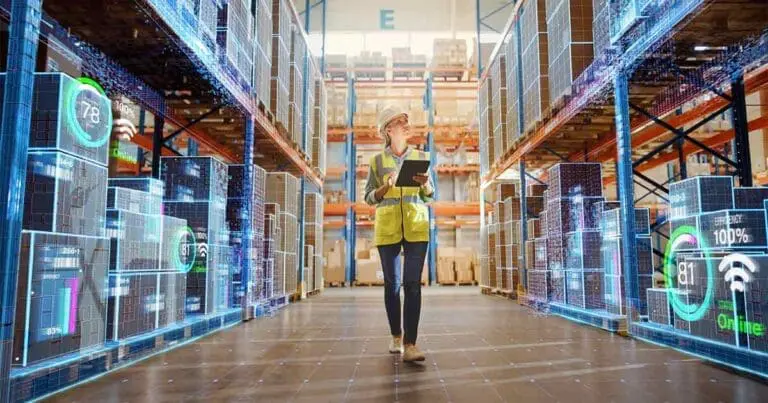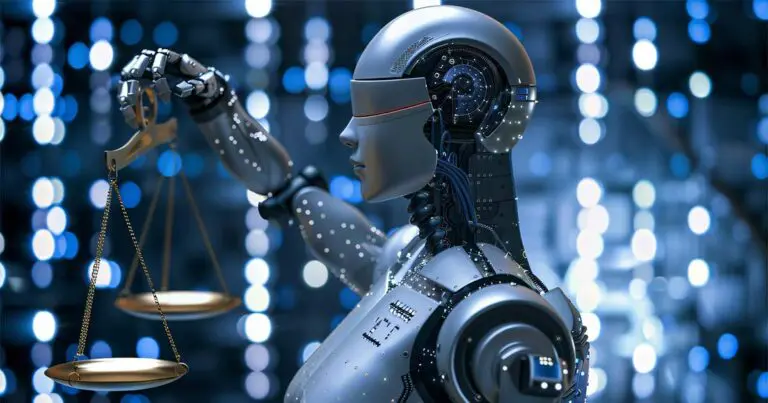How The Retail Industry is Embracing New Technology and Its Benefits

Retail has always been a technologically-driven industry, but now more than ever before, digital transformation is taking over.
From artificial intelligence (AI) to customer experience technologies, retailers are learning the power of leveraging new technology and the resulting benefits of doing so.
In this blog post, we will explore how the retail industry is embracing digital transformation and discuss specific examples of how they are capitalizing on this shift for growth.
9 examples of new technology in retail
- Artificial intelligence (AI)
- Machine learning (ML)
- Big data analytics
- Self-checkout
- Automated supply chains
- Augmented Reality (AR) and Virtual Reality (VR)
- Mobile Payments
- Beacon Technology
- Robotics
1. Artificial intelligence (AI) in retail
AI is playing a major role in the retail industry.
Retailers are using AI to better understand customer behavior and preferences, create more personalized experiences for customers, automate processes, and improve supply chain efficiency.
For example, large chains such as Walmart are using AI-powered facial recognition technology to monitor checkout lines and detect theft.
2. Machine learning (ML) in retail
ML algorithms are used to make predictions on customer behavior and offer targeted promotions.
Retailers can use ML models to identify customer segments and target them with relevant offers, resulting in increased loyalty and sales.
3. Big data analytics in retail
Big data has been around for years, but its use in the retail industry is rapidly growing.
Retailers are now using big data to gain insights into customer behavior and optimize their supply chain.
Big data analytics can help retailers better understand customer preferences, predict demand for products and services, and identify trends.
4. Self-checkout in retail
Retailers are leveraging self-checkout to offer customers a more efficient and convenient way to shop.
Self-checkout can help reduce lines, improve customer service, and increase sales.
5. Automated supply chains in retail
Retailers are leveraging automated supply chains to reduce costs, increase efficiency, and optimize inventory management, changing the retail industry and manufacturing as we know it.
6. Augmented Reality (AR) and Virtual Reality (VR) in retail
AR and VR are giving customers a more immersive shopping experience.
Retailers are using AR to give customers a virtual try-on experience, providing them with a better understanding of the product before buying. VR can be used to create virtual stores that customers can explore from the comfort of their homes.
7. Mobile Payments in retail
Mobile payments are becoming increasingly popular amongst consumers and retailers alike as they provide a more secure and convenient way to pay.
8. Beacon Technology in retail
Beacons are small transmitters that can be used to send notifications to customers’ mobile devices.
Retailers are leveraging beacon technology to deliver personalized offers and promotions to their customers.
9. Robotics in retail
Robotics is transforming the way retailers operate, from automated warehouses and inventory management systems to robots that can interact with customers.
Robots are also being used to provide more efficient customer service by answering commonly asked questions and gathering customer feedback.
Benefits of using new technology in retail
Using new technology in retail has many benefits, including increased efficiency, cost savings, better insights into customer behavior, and easier inventory management.
Increased efficiency and cost savings in retail
Leveraging new technologies, such as AI and automation, retailers can reduce costs and increase efficiency by automating processes and optimizing their supply chain.
Improved retail customer experience
By leveraging new technologies such as AR, VR, beacons, and mobile payments, retailers can provide customers with a more personalized shopping experience.
Better insights into retail customer behavior
Using big data analytics and machine learning algorithms, retailers can gain better insights into customer behavior and preferences, allowing them to cater more effectively to their customers’ needs.
Easier retail inventory management
Robotics and automated supply chains can help retailers streamline their inventory management, decreasing the amount of time and resources needed to manage their stores.
More accurate demand forecasting in retail
By leveraging big data analytics, retailers can better predict demand for products and services, resulting in improved sales and customer satisfaction.
Enhanced personalization in retail
Using big data and AI, retailers can provide customers with more personalized experiences, increasing customer satisfaction and loyalty.
of the shopping experience
Using new technologies in retail
From improved efficiency to increased sales, retailers are quickly adapting to the digital world and leveraging new technologies to offer customers a more efficient and convenient way to shop.
However, it is essential for retailers to use the right technology for their business and ensure that they have the teams and resources in place to implement them successfully in order to get the most out of them.
The retail industry is undoubtedly embracing new technology, and the results of doing so have been overwhelmingly positive.
Looking To Gain Clarity On Your Digital Transformation Needs?
Download Your Tactical Guide to Digital Transformation now and learn everything you need to know in 10 minutes or less!
More articles about job searching and industry trends:
- Benefits of Digital Transformation in Healthcare with Examples
- HR Technology in Hiring: Streamlining Your Recruitment & Onboarding
- 4 Simple Resume Tips to Help You Hire Job Candidates Faster
- What Does a Recruiter Do & Who Do They Work For?
- Will ChatGPT Replace Your Job?
- How to Spot & Avoid Fake Job Posting Scams
- What to Do If You Find Out Your Coworker Makes More Money Than You
- Hidden Job Market: What Is It & How to Find Jobs On It
- How to Best Explain Having a ‘Gap’ on Your Resume
- Cliche Interview Answers to Avoid & What to Say Instead



